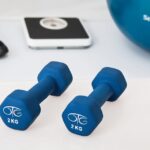As you lace up your running shoes and head out for a jog, you might not be thinking about the impact that exercise can have on your lungs. But for some individuals, physical activity can trigger a condition known as exercise-induced bronchoconstriction (EIB).
What is Exercise-Induced Bronchoconstriction?
EIB is a type of asthma that is triggered by physical activity. During exercise, the body requires more oxygen, which leads to an increase in breathing rate and depth. For individuals with EIB, this increased demand for oxygen can cause the airways to narrow, making it difficult to breathe.
What Causes EIB?
The exact cause of EIB is not fully understood, but experts believe that it is related to the body’s immune response to exercise. During physical activity, the body releases certain chemicals that can cause inflammation and narrowing of the airways. For individuals with EIB, this response is more severe, leading to symptoms such as wheezing, coughing, and shortness of breath.
Who Is At Risk for EIB?
Anyone can develop EIB, but it is more common in individuals with a history of asthma or allergies. It is also more likely to occur in cold, dry environments, such as during winter sports or outdoor activities in the winter.
What Are the Symptoms of EIB?
The symptoms of EIB can vary from person to person, but common signs include:
– Wheezing or whistling sound when breathing
– Coughing
– Shortness of breath or difficulty breathing
– Tightness in the chest
– Fatigue or reduced endurance during exercise
How Is EIB Diagnosed?
If you suspect that you have EIB, it is important to see a doctor for an accurate diagnosis. Your doctor may perform a breathing test called spirometry to measure the amount of air you can exhale. They may also perform a bronchial challenge test, which involves breathing in a small amount of a substance that can trigger bronchoconstriction. If your symptoms worsen during the test, it is likely that you have EIB.
How Is EIB Treated?
There are several treatment options available for EIB, including:
– Inhalers: Medications such as albuterol can help to open up the airways during exercise.
– Leukotriene modifiers: These medications help to reduce inflammation in the airways and can be taken before exercise to prevent symptoms.
– Warm-up: Engaging in a gradual warm-up before exercise can help to reduce the severity of symptoms.
– Avoiding triggers: Individuals with EIB should avoid exercise in cold, dry environments and should be mindful of other triggers, such as allergens or pollutants.
Conclusion
Exercise-induced bronchoconstriction can be a frustrating and uncomfortable condition, but with proper diagnosis and treatment, it can be managed effectively. If you suspect that you have EIB, talk to your doctor about your symptoms and treatment options. With the right care, you can continue to enjoy the benefits of physical activity without the discomfort of EIB.




